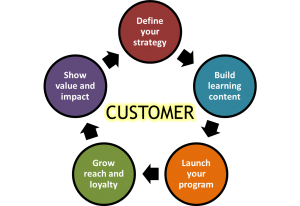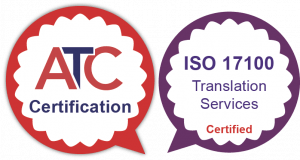
This post is the first in a series from Christine Yoshida, President & Principal Consultant of Enlitefy, Inc.
With over 20 years’ experience with some of the largest program sponsors in IT, Christine has in-depth expertise in creating, launching, and managing successful certification programs that benefit millions of IT workers around the world for Apple, Intel, Cisco, Microsoft, LinkedIn, and Blue Jeans Network. Christine also offers training and certification consulting services through Enlitefy, Inc.
Whether you are thinking of starting up a new certification program or revising an existing one, the number of considerations to take into account and decisions to make along the way can be daunting. With generational shifts in the workforce, ever-changing technology, and many new platforms from LMS to social media, determining a strategy and plan can be daunting. I’ve found that it’s best to take a systematic approach that places the customer’s success as the top priority. I’ve developed a cyclical, five-phase process that puts your customer in the center to ensure that your program ultimately works for them while meeting your organization’s business goals.

Answering the “Why” Question
In the first phase, you need to define your strategy. This starts with engaging with your customers to hear from them what their needs and problems are. One of the outcomes of your listening activities must be an answer to the question “Why Certification?” There are many internally-driven reasons why organizations decide to create a certification program, including reducing product support demands, building customer loyalty, and generating revenue. But if after listening to your customers you are not able to articulate how a certification program will solve their problems, then it may not be the right time to move forward.
For example, you may hear from your customer that one of their biggest pain points is that your partners are delivering poor technical support, resulting in equipment downtime that impacts the customer’s ability to provide key services. A certification program that incorporates training and exams that your partners would be required to complete would clearly solve the customer’s problem.
Conversely, let’s consider a scenario in which an internal stakeholder is pushing for a certification program to build awareness of your products and raise market share. Your customers tell you it would be great for your company to offer a certification program so that they can showcase their skills to employers. Employers tell you it would be great for them to be able to see that candidates have skills using your product. But in a customer survey you did as part of your listening activities, being able to identify who has the right skills on your product ranked at the bottom of the most pressing customer problems. In this case, the timing might not be right to invest in a certification program.
Roadmap
In addition to your customer listening activities, conduct an analysis of competitor programs and the market for your organization’s industry. Compile comparison and benchmarking information about existing programs and identify gaps in the market relative to your program. When you conduct a needs analysis with customers, include a variety of stakeholders in your organization’s ecosystem such as partners, support staff, product managers. Assess all of the data you’ve gathered and pull together a roadmap for your certification program that articulates the following key program areas: value to customers, gaps, goals, objectives, structure and components, build vs. buy considerations, required investment, and proposed timeline. Present this to different stakeholders and customers to get feedback and refine. Move onto the next phase in the process only after you have a solid roadmap that resonates across your stakeholder ecosystem.
Other posts in this series
[row]
[column md=”4″]

[column md=”8″]
Developing a Certification Program (Part 2): Build Content
In the second, “building” phase, your primary goal is to create content that solves the customer problems you identified in the first “strategy” phase.
[/column]
[/row]




